Veal Prince Orloff
Ready to impress dinner guests with a dish that screams elegance? Veal Prince Orloff is the culinary masterpiece you’ve been searching for. This classic French creation combines tender veal, savory mushrooms, and creamy sauces in a presentation that’s guaranteed to draw gasps when it hits the table.
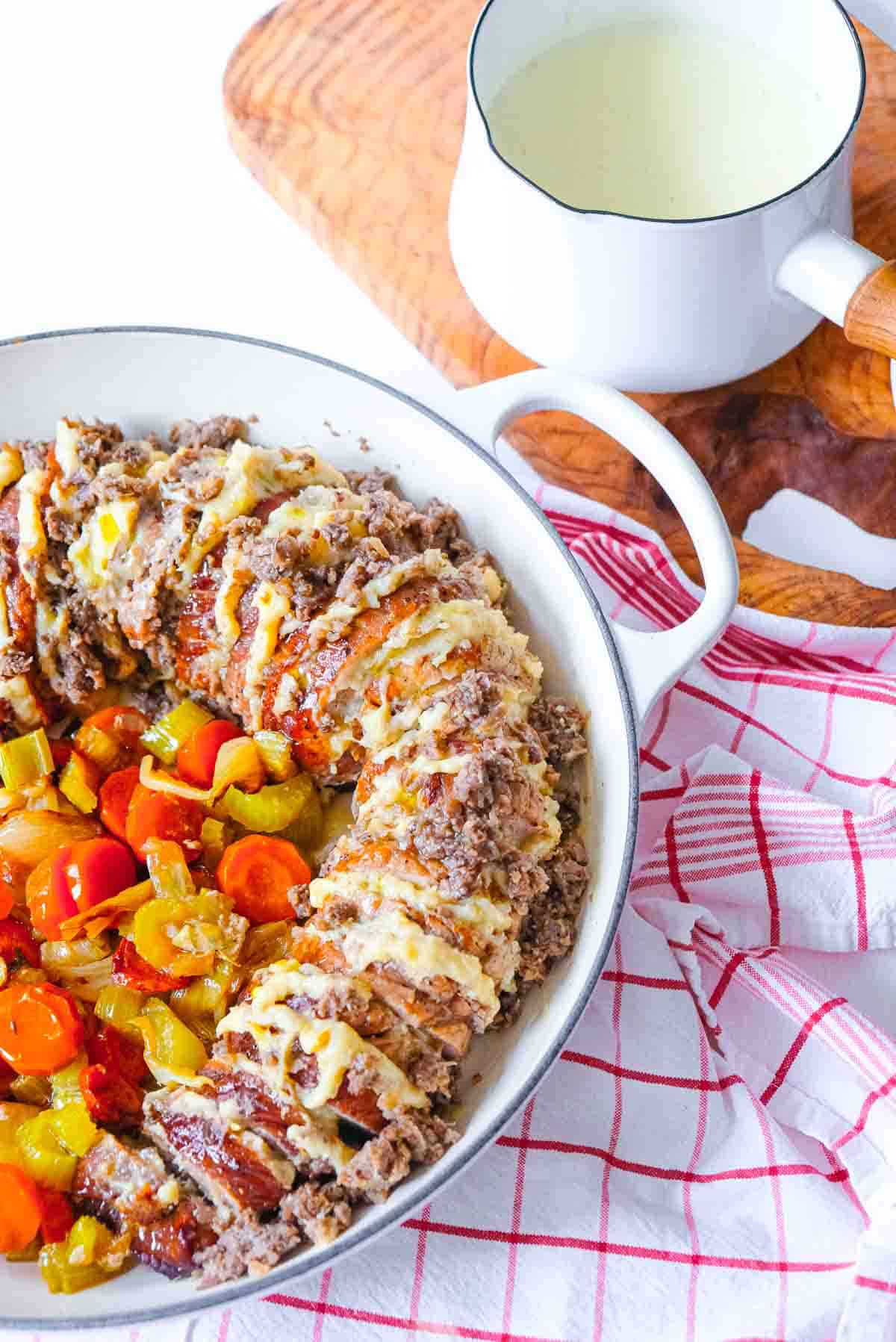
The magic of Veal Prince Orloff lies in its layers. Imagine perfectly roasted veal slices, each separated by a velvety onion soubise and earthy mushroom duxelles, all blanketed in a rich, cheesy Mornay sauce. It’s a symphony of flavors that might sound intimidating, but I promise you can pull this off—and when you do, you’ll feel like you’ve graduated to chef status.
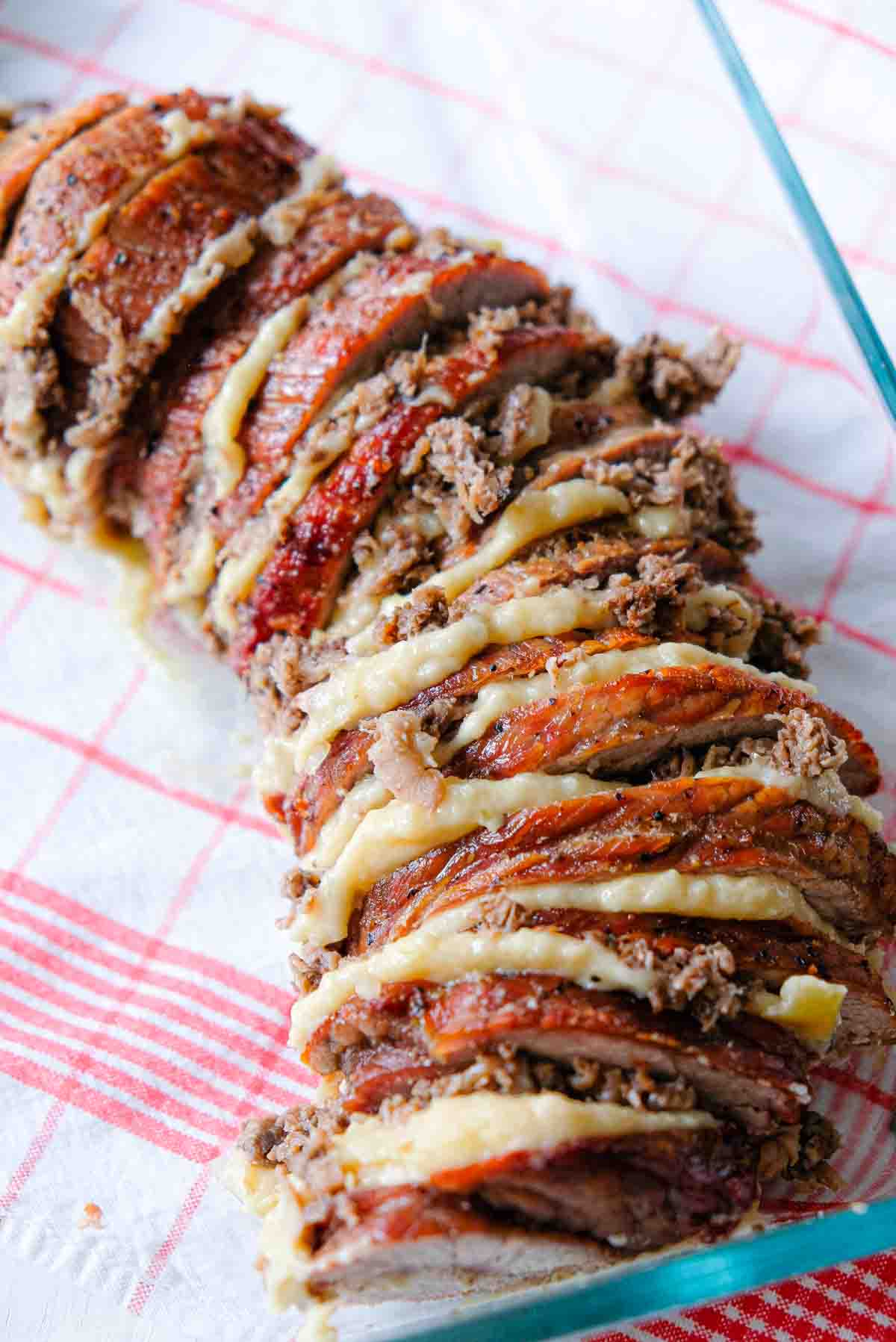
Ingredients
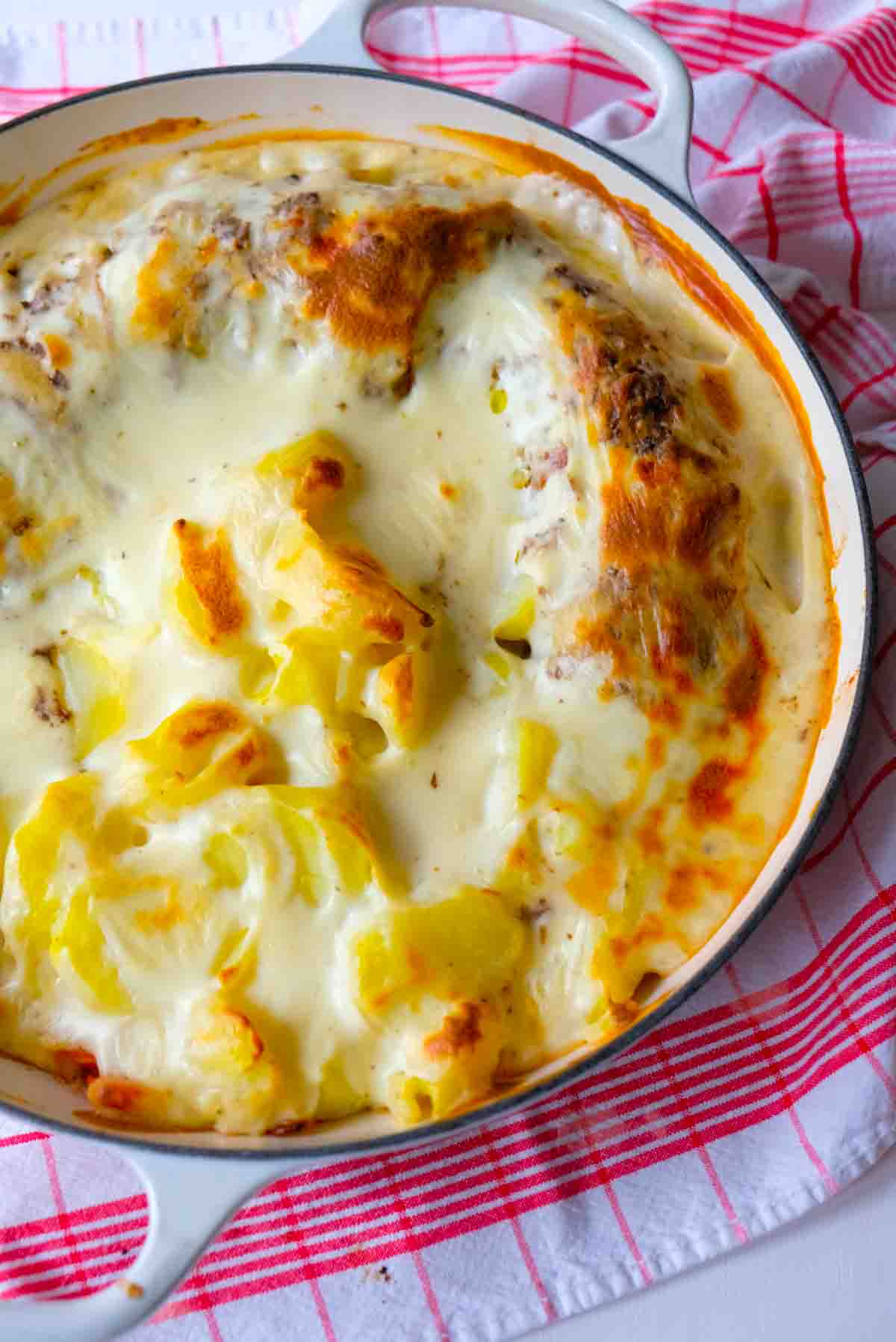
Roast Veal
- 3 lbs veal loin
- 1 teaspoon salt for the veal
- 0.5 teaspoon black pepper for the veal
- 3 large carrots, peeled and cut
- 3 stalks celery, cut
- 1 yellow onion, sliced
- 2 teaspoons vegetable oil for the roasting vegetables
- 0.5 teaspoons salt for the roasting vegetables
- 5 sprigs fresh thyme (optional)
Onion Soubise
- 1 lb yellow onions, sliced
- 2 oz raw white rice
- 0.25 cup water
- 1.5 oz melted butter
- 0.5 teaspoon salt
Mushrooms Duxelles
- 0.5 lb fresh chestnut or cremini mushrooms, finely chopped
- 3 tablespoons shallots, finely chopped
- 1 oz butter
- 0.5 teaspoon salt
- 0.25 teaspoon black pepper
Mornay Sauce
- 3 oz butter
- 3 oz flour
- 2.5 cups milk or combination of milk and pan roasting juices
- 1.5 oz grated Gruyere cheese or other Swiss cheese
- 0.5 teaspoon salt
- 0.25 teaspoon black pepper
- 1 pinch nutmeg, freshly grated
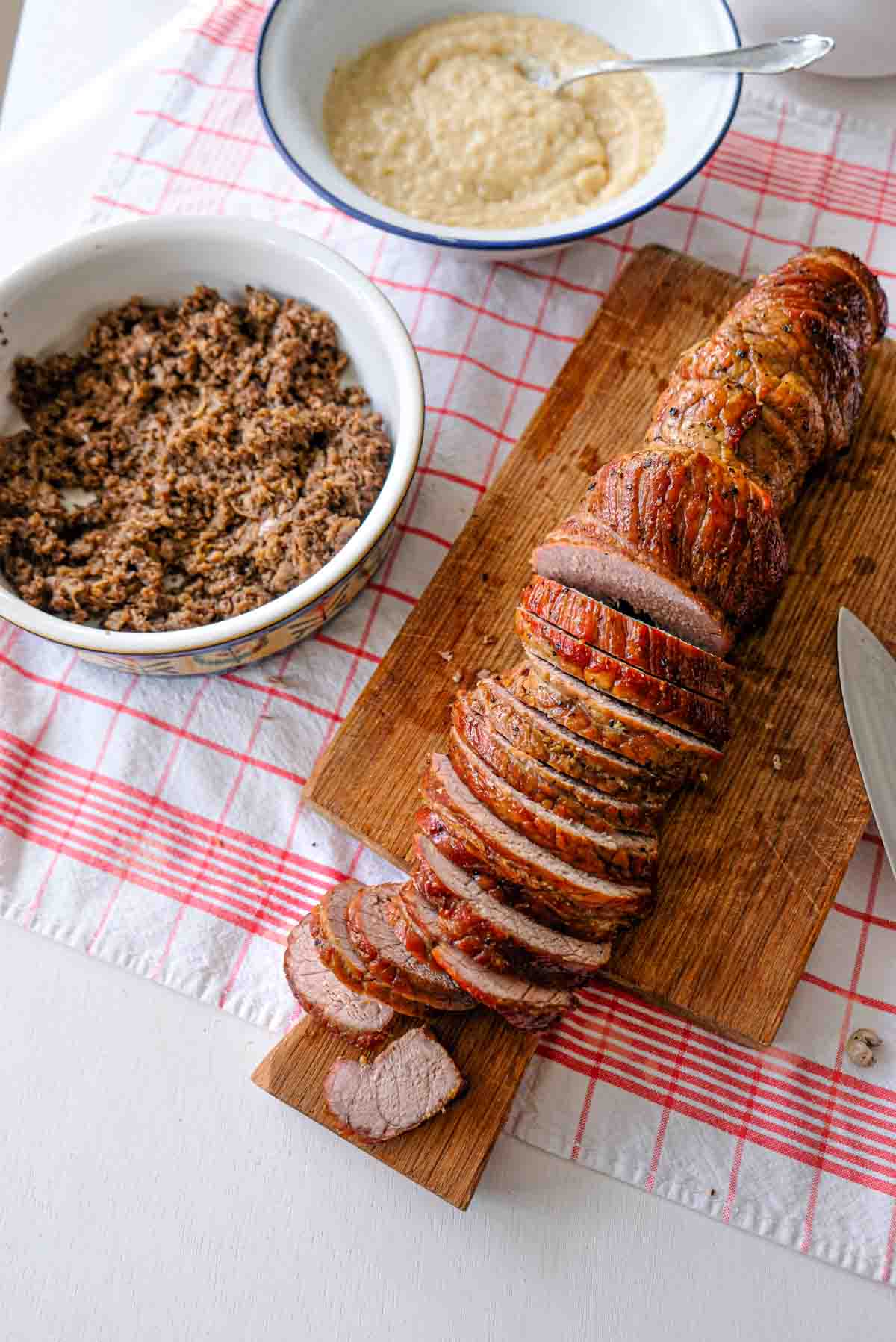
Steps
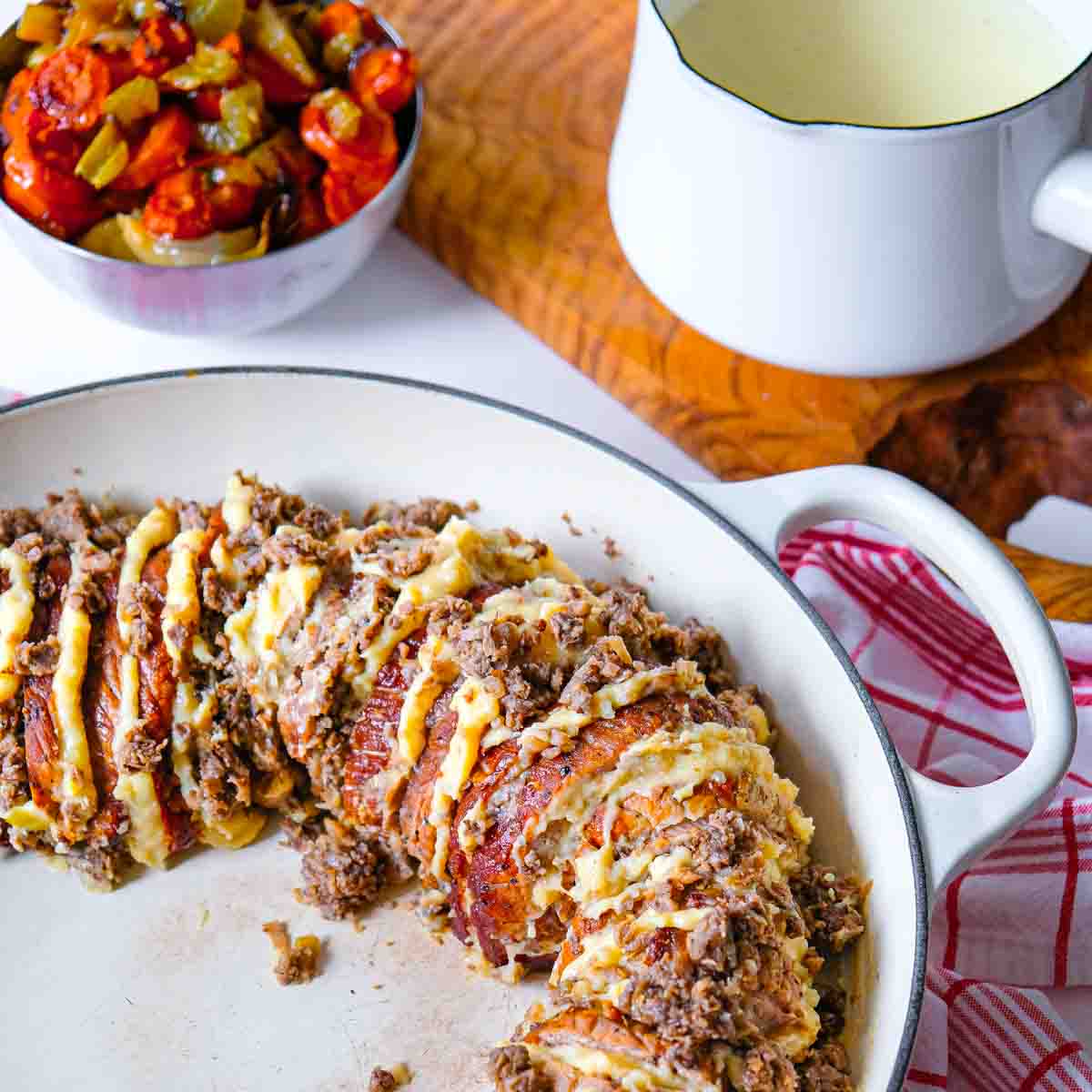
Veal
- Preheat oven to 165°C (325°F). Position the rack in the middle of the oven to ensure even heat distribution.
- Prepare the veal by patting it dry with paper towels (moisture prevents proper browning). Season all sides thoroughly with 1 teaspoon salt and 0.5 teaspoon black pepper, pressing the seasonings into the meat.
- Prepare the vegetable bed by cutting 3 large carrots, 3 stalks celery, and 1 yellow onion into roughly 1-inch pieces. Place them in the roasting pan, drizzle with 2 teaspoons vegetable oil, sprinkle with 0.5 teaspoon salt, and toss to coat. Add the fresh thyme sprigs (if using) scattered throughout. This vegetable bed will flavor the meat and prevent it from sticking.
- Place the seasoned veal on top of the vegetables (or on a rack if your roasting pan has one). A rack allows for better air circulation, but the vegetable bed works beautifully too.
- Roast at 165°C (325°F) for 50-60 minutes, or until an internal read thermometer inserted into the thickest part reads at least 49°C (120°F). This temperature yields medium-rare veal – if you prefer it more done, aim for 57°C (135°F) for medium.
- Remove from oven and allow to cool completely before assembly (at least 30 minutes). The cooling step is crucial – cutting hot veal will cause the juices to run out, resulting in dry meat. You can also make this a day ahead and store in the refrigerator, tightly wrapped.
Onion Soubise
- In a medium-sized pot, bring 1.5 liters (6 cups) of water to a rolling boil over high heat.
- When the water is vigorously boiling, add the 2 oz rice and cook for exactly 5 minutes – the rice will be partially cooked. Drain thoroughly in a fine-mesh sieve and transfer to a medium-sized oven-safe dish.
- Thinly slice the 1 lb yellow onions (about 1/8-inch thick) and add them to the oven-safe dish, layering them on top of the rice. Add 0.25 cup water, 0.5 teaspoon salt, and half of the 1.5 oz melted butter (about 0.75 oz). The rice helps thicken the soubise while adding body to the sauce.
- Cover the dish tightly with a lid or aluminum foil (to trap moisture) and place in the oven alongside the veal if possible, cooking for 17-18 minutes at 165°C (325°F). The onions should be completely soft and translucent, with no resistance when pierced with a fork. Allow to cool for 5 minutes before handling.
- Transfer the mixture to a food processor (ideal for the smoothest texture) or blender and process until smooth and creamy. The consistency should be like thick yogurt – spreadable but not runny. If too thick or clumping, add 1 teaspoon of water at a time until it reaches the proper consistency. Set aside until assembly.
Mushrooms Duxelles
- Thoroughly wash the 0.5 lb mushrooms and pat dry with paper towels. Moisture is the enemy of proper browning. Finely chop them by hand or pulse in a food processor until they resemble coarse breadcrumbs. Finely chop the 3 tablespoons shallots to about the same size as the mushrooms.
- Melt 0.5 oz butter (half the total amount) in a non-stick skillet over medium-high heat until it foams but doesn’t brown. The foaming indicates the water has evaporated and the butter is ready.
- Add the mushrooms and shallots to the skillet and immediately season with 0.5 teaspoon salt and 0.25 teaspoon black pepper. The salt helps draw out moisture from the mushrooms.
- Cook for 3-5 minutes, stirring frequently, until the mushrooms have softened and released their liquid. Then continue cooking until all liquid has evaporated – the pan will look dry and the mixture will begin to stick slightly to the pan. This concentration of flavor is essential.
- Once the mixture is dry, add the remaining 0.5 oz butter and cook for another 2-3 minutes until the mixture becomes aromatic and begins to brown slightly. The mushrooms should be deeply savory with no raw flavor. If your mushrooms were processed very finely, they may not visibly brown but will develop a toasted aroma. Set aside until assembly.
Mornay Sauce
- Measure and set out all ingredients before starting: 3 oz butter, 3 oz flour, 2.5 cups milk (or milk and pan juices combination). Having everything ready prevents the roux from burning while you measure ingredients.
- Heat a heavy-bottomed saucepan over medium-high heat for about 2 minutes until hot but not smoking.
- Add the 3 oz butter and allow it to melt completely, then add the 3 oz flour all at once, whisking vigorously to incorporate. Cook this roux for 3-5 minutes, whisking constantly, until it smells nutty and turns a light golden color. A pale roux will leave a floury taste in your sauce.
- Reduce heat to medium and add the milk 1/4 cup at a time, whisking vigorously with each addition until completely smooth before adding more. This gradual addition is crucial to prevent lumps. The mixture will initially seize and thicken dramatically with the first additions of milk, then gradually become more fluid.
- Once all milk has been incorporated, continue cooking for 5-7 minutes, whisking frequently, until the sauce coats the back of a spoon. To test, run your finger through the sauce on the back of a spoon – if the line holds, it’s ready.
- Season with 0.5 teaspoon salt, 0.25 teaspoon black pepper, and a pinch of freshly grated nutmeg. Then add the 1.5 oz grated Gruyere cheese and whisk until completely melted and incorporated. The sauce should be smooth, velvety, and thick enough to coat the veal but still be pourable.
Assembly
- When ready to cook, preheat oven to 200°C (400°F).
- Slice the cooled veal roast into approximately 1.5 cm (0.5 inch) slices, or slightly thicker if preferred. Use a sharp knife and clean cuts to maintain the shape of each slice.
- Starting with an end piece, spread a layer of onion soubise (about 1 tablespoon) on one cut side, then top with a layer of mushroom duxelles (about 2 teaspoons). The mushrooms should adhere easily to the sticky soubise. Place this slice in the roasting pan.
- Repeat with each slice, pressing them against the previous piece to recreate the original roast shape, building layers of veal with soubise and duxelles between each slice. This layering is what creates the beautiful striped effect when served.
- Once all slices are arranged, add the roasting vegetables (if using) and boiled potatoes (if using) around the reassembled veal in the pan.
- Pour the Mornay sauce evenly over the entire dish, ensuring it covers the top and sides completely. For an extra touch of indulgence, sprinkle additional grated Gruyere cheese over the top.
- Bake uncovered for 15-18 minutes at 200°C (400°F) until the sauce is bubbling around the edges and the top develops a beautiful golden brown color. If the top browns too quickly, loosely cover with foil while the dish continues to heat through.
- Allow to rest for 5 minutes before serving. This resting period helps the sauces set slightly, making for cleaner slices when serving.
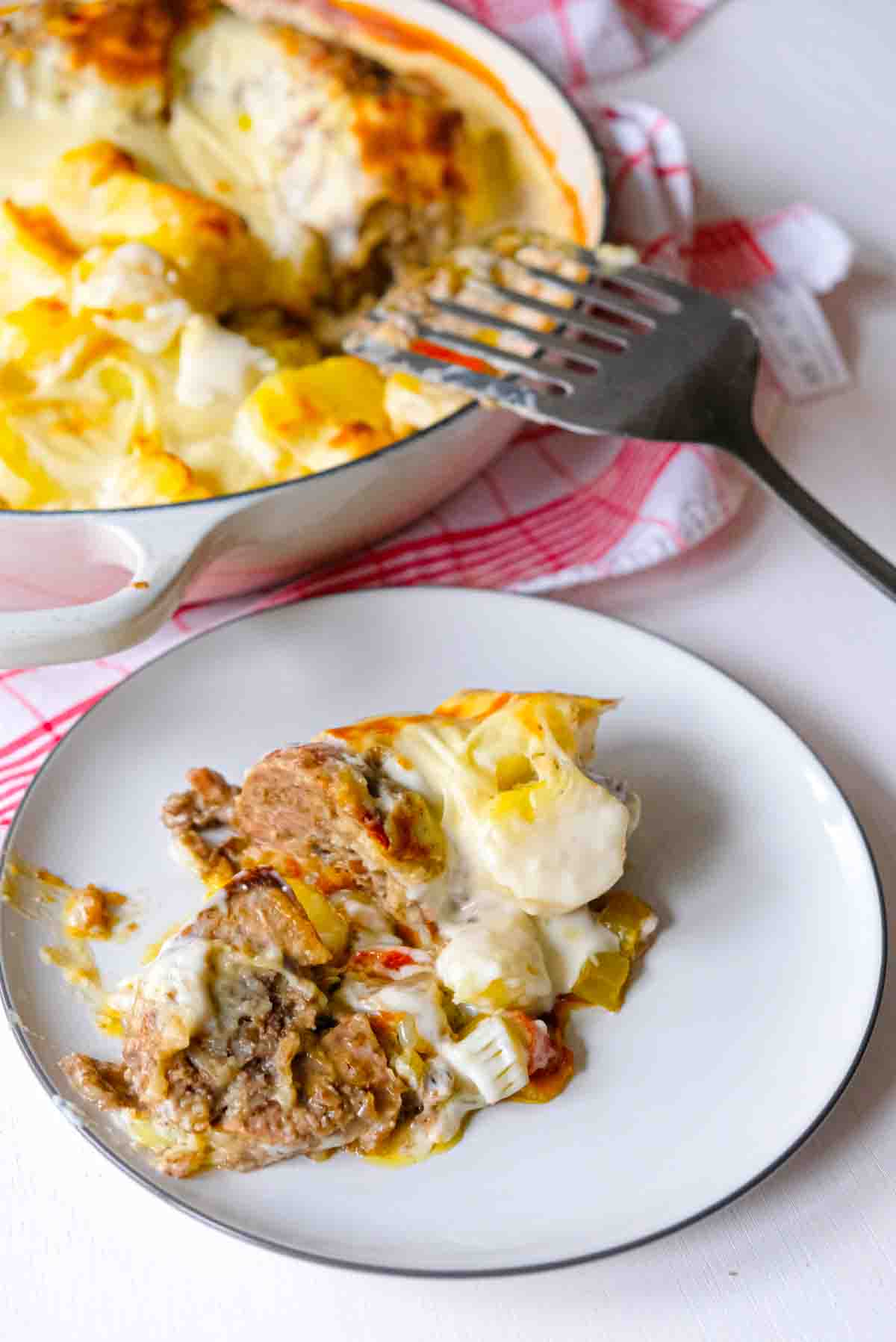
Smart Swaps
- If veal is unavailable or beyond your budget, substitute with pork loin (1:1 ratio) for a more economical but still delicious version
- Replace Gruyere cheese with Emmental or Comté (1:1 ratio) for similar nutty flavor profiles
- For a lighter version, use 2% milk instead of whole milk in the Mornay sauce, reducing calories without sacrificing creaminess
- Dried thyme (use 1.5 teaspoons) can substitute fresh thyme sprigs in a pinch
Make It Diabetes-Friendly
- Replace white rice in the soubise with cauliflower rice (use 2 oz), reducing carbs by approximately 12g per serving
- Use unsweetened almond milk instead of regular milk in the Mornay sauce (same amount), cutting carbs by about 8g per serving
- Serve with roasted non-starchy vegetables instead of potatoes to keep the glycemic impact low
- Consider reducing portion size to 4-5 oz of prepared dish per serving, pairing with a large green salad dressed with olive oil and vinegar
Pro Tips
- The key to perfect slicing is using a very sharp knife and allowing the veal to cool completely before cutting
- Save the pan drippings from roasting the veal to add to your Mornay sauce – this boosts flavor tremendously
- For the smoothest onion soubise, let your food processor run for a full 2 minutes – patience yields silky results
- This dish can be assembled up to the point of adding the Mornay sauce a day ahead, then refrigerated. Simply add the sauce just before baking, and increase baking time to 25-30 minutes if cooking from cold